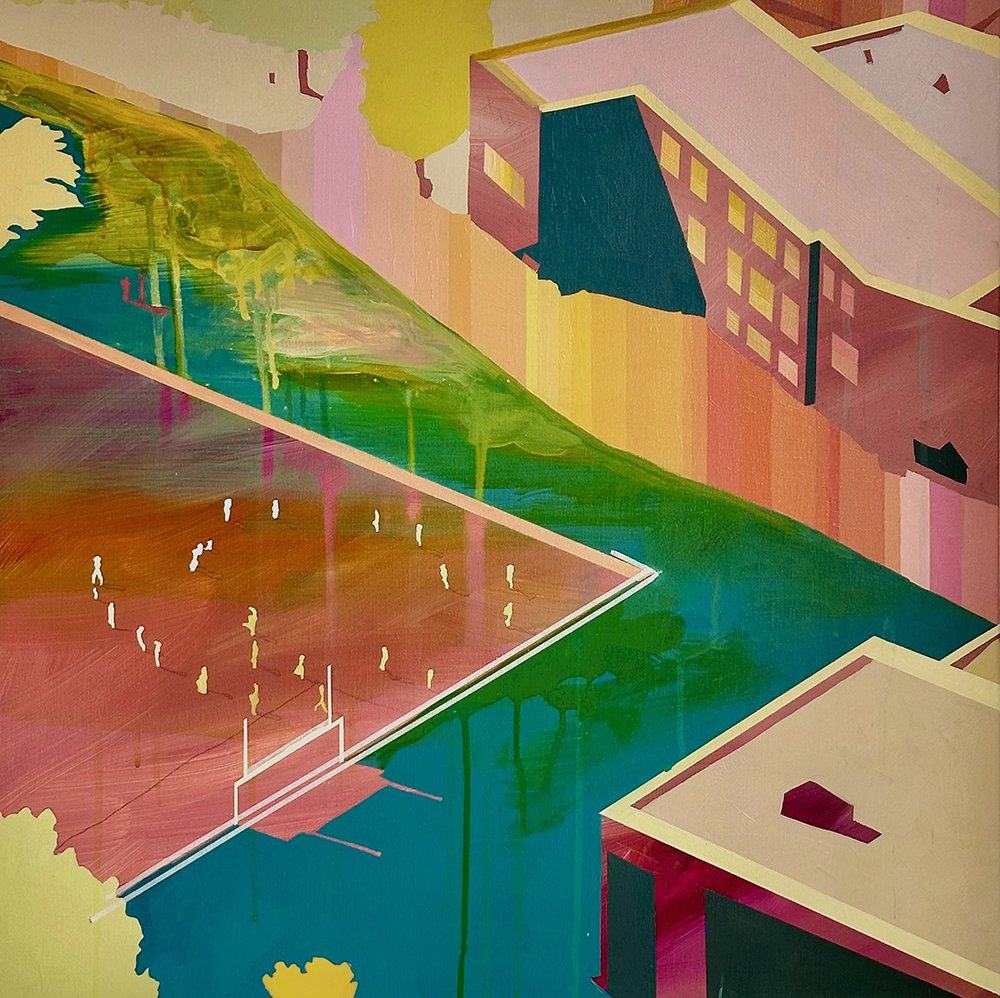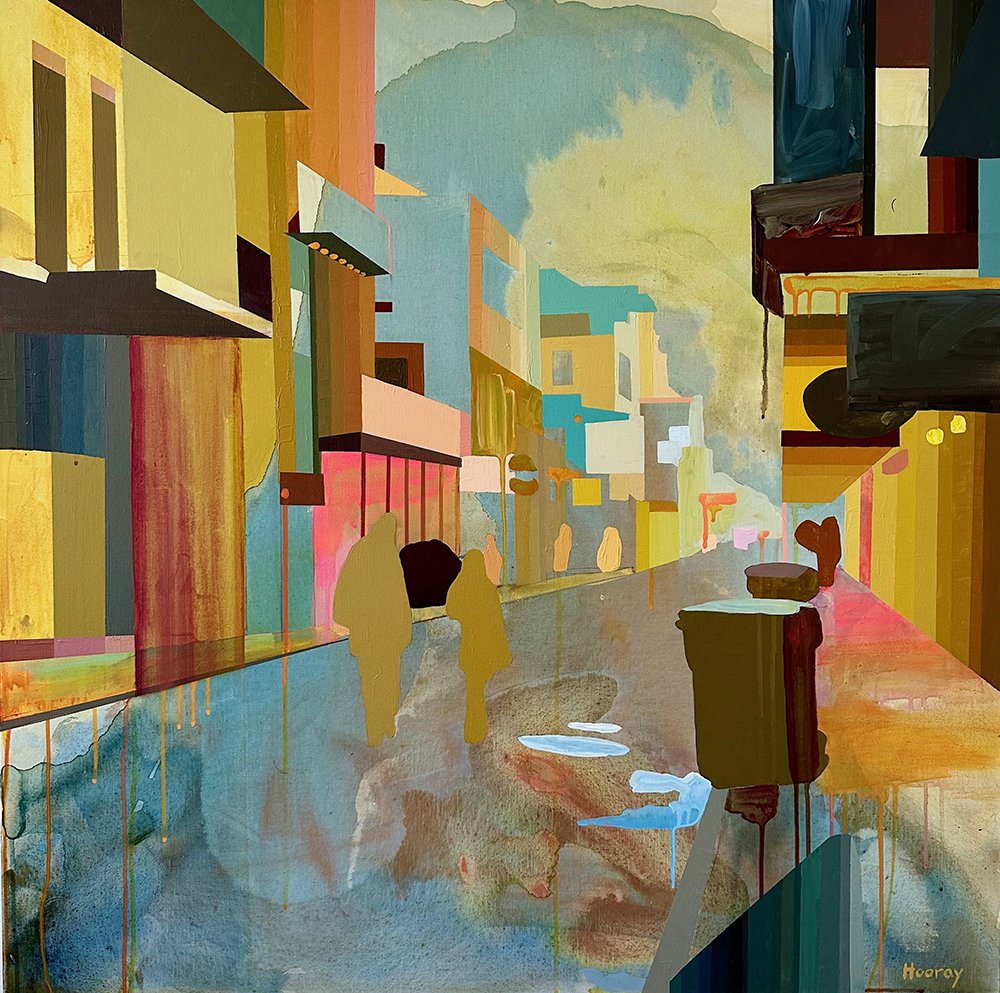Kate Hooray Osmond
Kate Hooray Osmond
Kate Hooray Osmond is an American interdisciplinary artist based in Charleston, SC, whose work explores experiential acceptance. Kate’s artwork has been featured in Introspective Magazine, Hyperallergic, Art and Cake LA, Shoutout Atlanta, ArtMag, and Charleston Magazine. She exhibited her first solo museum show at the Franklin Burroughs/Simeon Chapin Art Museum in 2018 and curated her first exhibition, Prototype for a Landscape, at the City Gallery in 2021. She has been named the State Fellow for South Carolina (SouthArts Commission), Lowcountry Artist of the Year (Griffith Reyburn Award), and the Piccolo Spoleto Poster Commissioned Artist.
Recently, her paintings have been included in the Biennial by the Center for Contemporary Art of South Carolina, the LaGrange Southeast Regional, and as a finalist for the CCA Prize. Kate Hooray earned her MFA in Studio Art from the Maryland Institute College of Art and her BA from Saint Mary’s College of Maryland.
Amelia Johannsen “Any Moment” 2023
Artrepreneur: In what ways does your artwork reflect your personal experiences or worldview?
Kate Hooray Osmond: Experience is the thing we all share in common. Living connects us, we are all tethered to one another, though we all move through shared experiences differently. There is no correct way to interpret life. I work hard to remember that I am only here to be a witness and to lay no judgement on my experience. But I am a human and I feel fear, joy, excitement, terror, all the emotions; sometimes so many at once.
I try to paint my canvases as I experience life: as a composition of apparent contradictions: order and chaos, becoming and disintegrating, joyful and dreadful. I believe all the colors of experience are existing all at once.
Kate Hooray Osmond “Tones” 2023
ATP: How does your choice of subject matter reflect your values and interests?
KHO: The subject matter of my work is always an intersection of people with each other and with their environment: cities, industrial sites, bridges….
We build and live in amazing structures that were dreamed up by ourselves. We have invented our environments and movements within them. They are all fascinating and worthy of exploration.
I understand there are very significant environmental and social effects of progress and development and feel it important to consider as many aspects as possible of a landscape; both seen and unseen.
Kate Hooray Osmond “How It Should Be is How it Is” 2023
ATP: Can you describe the role of intuition in your creative process? How much do you rely on instinct versus planning when creating a painting?
KHO: I believe that human beings are unimaginably sophisticated at pattern recognition. We have the ability to recall past experiences and work with them in order to approach future challenges. An artists’s job is to weave these experiences together and curate them into connections that can be felt by the viewer in a way that resonates with them.
I practice my flexibility at creatively working with experience in a visual way but am still aware that I do not originate ideas. Only the Universe can do that.
Kate Hooray Osmond “Saturday Street” 2023
ATP: How does the process of creating art affect your mood or mindset? Do you find it therapeutic or challenging?
KHO: I need to practice art or go to my studio every day of the year. My connection to art-making is more akin to a vocation than a career. Painting and working with my hands is how I think, how I meditate. I must be moving at all times, in an intentional way.
I wouldn’t say that I am a joyful painter or a serious painter. I just am painting and considering and approaching. I will work on a piece every day for weeks but then it will need to be silent on a wall for a while so that I can think. Then the painting will let me know that it is ready to be finished, and so I finish it.
ATP: Can you describe the significance of color in your work and how you approach color choices?
KHO: I find it impossible not to use every color of the spectrum. I don’t begin a painting with that intention; far from it. Each painting begins with a specific color palette and I won’t begin the painting until I know exactly which colors to use; perhaps petal pink, mint, and yellow ochre. I will follow with these colors for a few days. Then there will always be a shift and the next layers are in response to the colors of the first layers.
By the end of the weeks and with many layers, I will have each color in its place, and always so many colors.
To view more of Kate’s work please visit their Artrepreneur profile.




